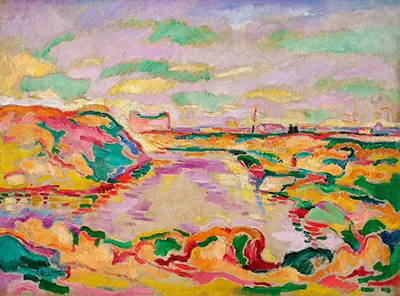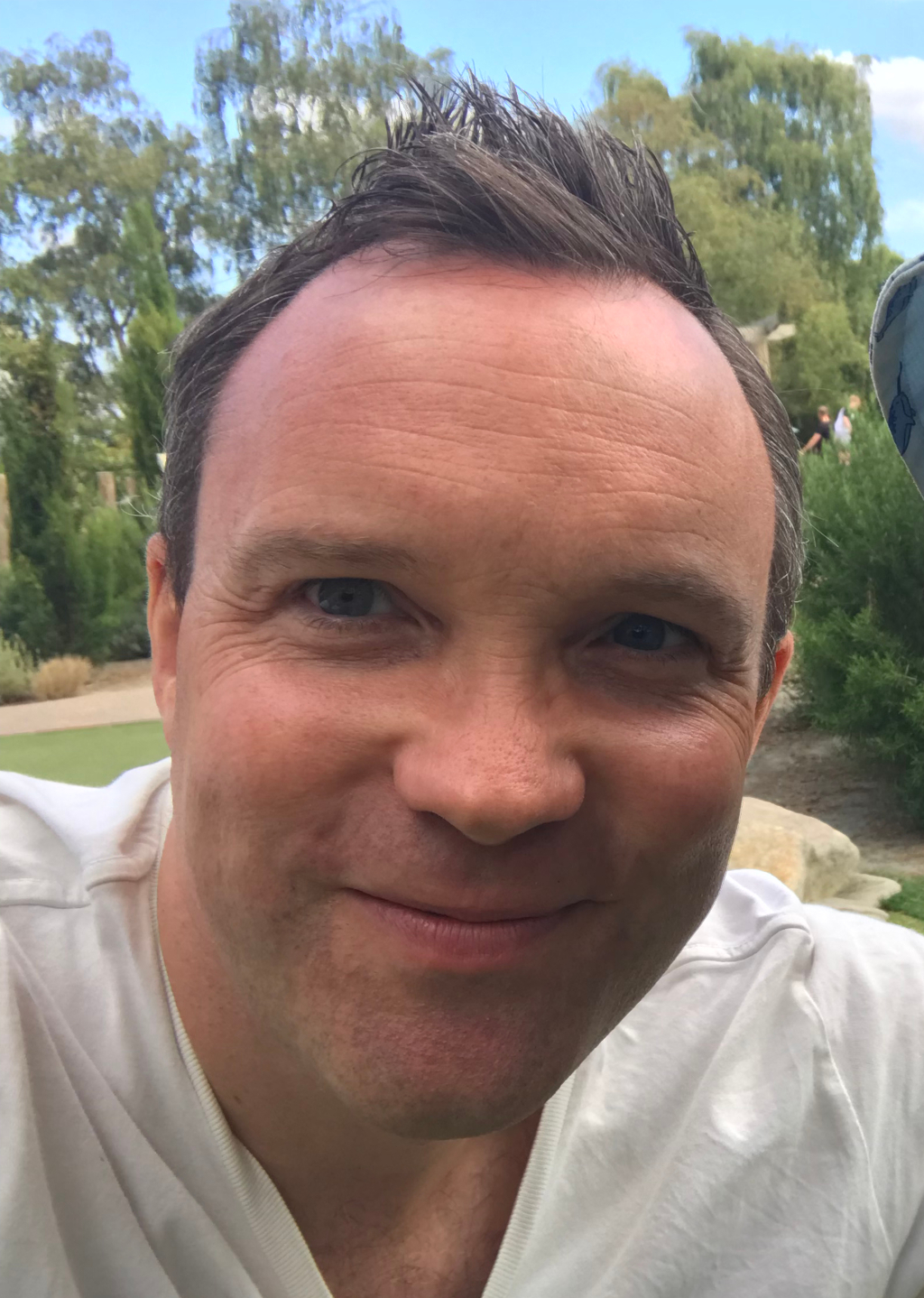The tones are immediately obvious as being from the Fauvist approach, with luminous greens, yellows and pinks sitting side by side, without any darker tones to offset their vividity. The forms are constructed from individually painted areas which do not always merge into their neighbouring areas, a little bit like the pointilist approach where the overall composition is a real sum of parts. This was a beautifully expressive way of formulating a scene, where you are not confined by the colours of reality, but able to produce your own version of what lies in front of you. Braque continued with Fauvism for several years but is now best known for his cubist work.
If we look at the layout of this painting itself, we find a river in the centre of the piece, produced from purple colours with darker dabs plus some white added to its edges to produce a feeling of activity and shadow. It veers off to the left of the canvas, between the two banks which dominate most of the work. We sit perched on one side, with the land sweeping round and off into the distance, whilst just a small mound completes the other side. We can make out perhaps a few buildings in the far distance, but without much detail available it is hard to tell if they are actually just natural objects such as trees or hills.
Braque's work within Fauvism would concentrate mainly on landscape painting, which he felt best suited the bright colour schemes and reduced detail. Some of his other contributions within that movement were Landscape at La Ciotat, Yellow Seacoast and L'Estaque. He alternated between cityscapes, often of harbours, and also scenes of the countryside where very little acknowledge of humanity was included. Many of these would have been constructed from initial drawings made on site, before then returning to his studio in order to complete the painting itself. This is a standard method of working for landscape painters from right across the ages, including the likes of JMW Turner, who gave us classic works such as Rain Steam Speed and Snow Storm.


